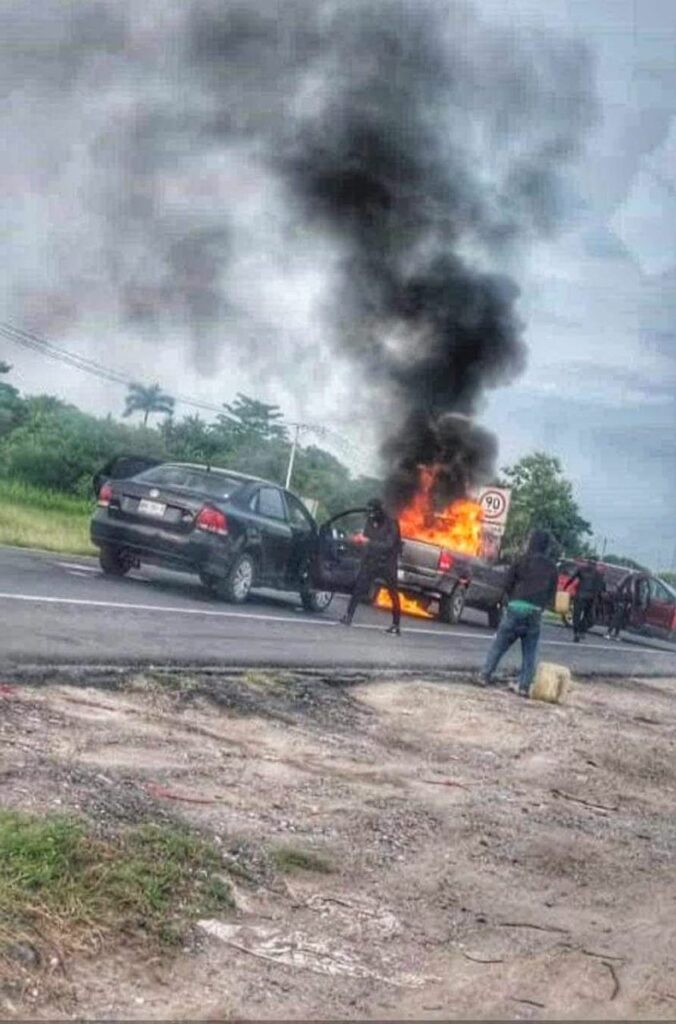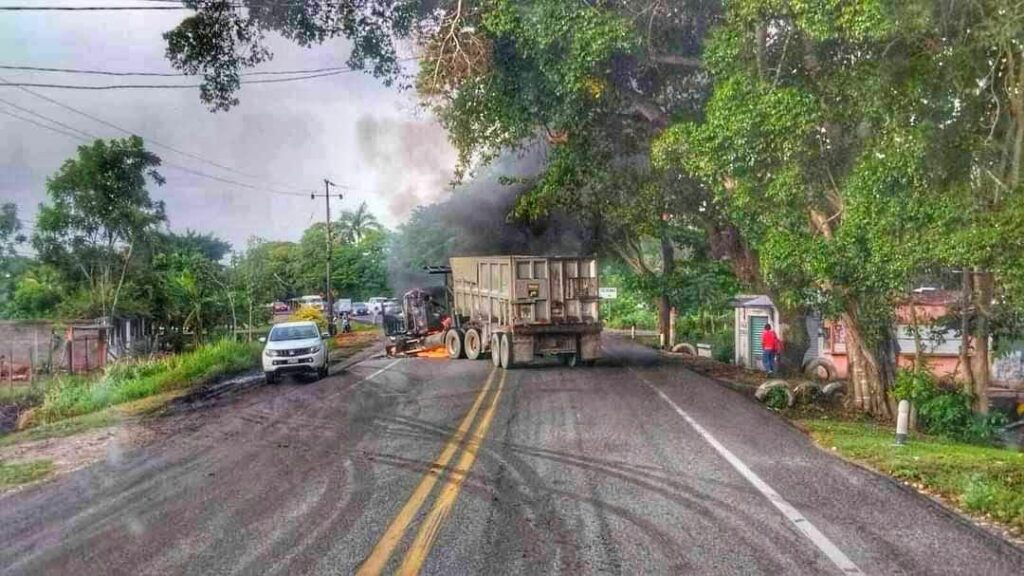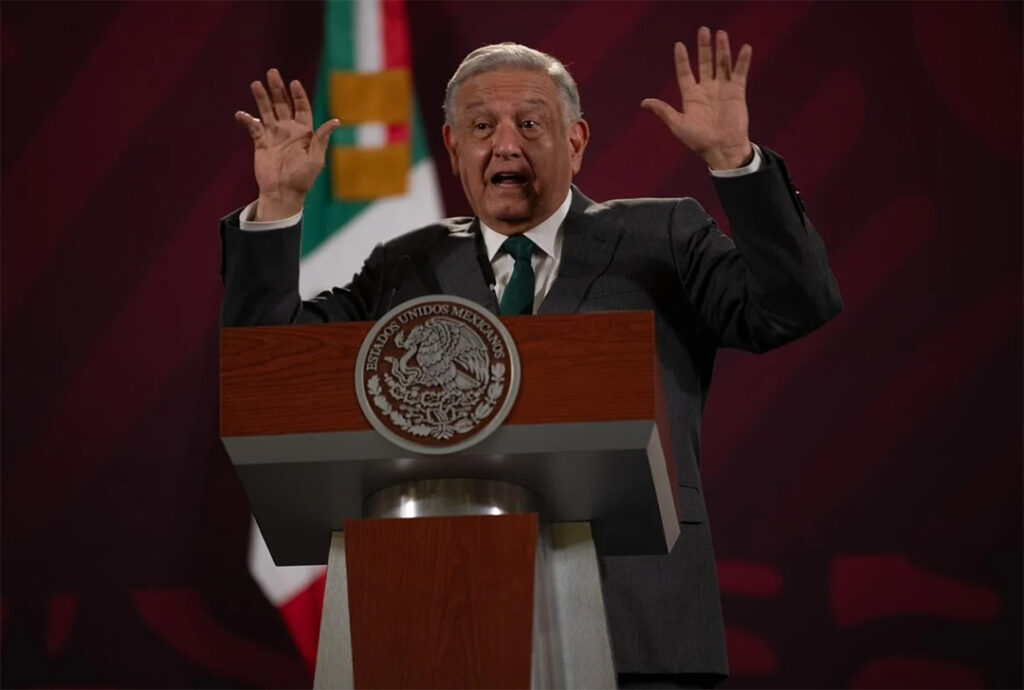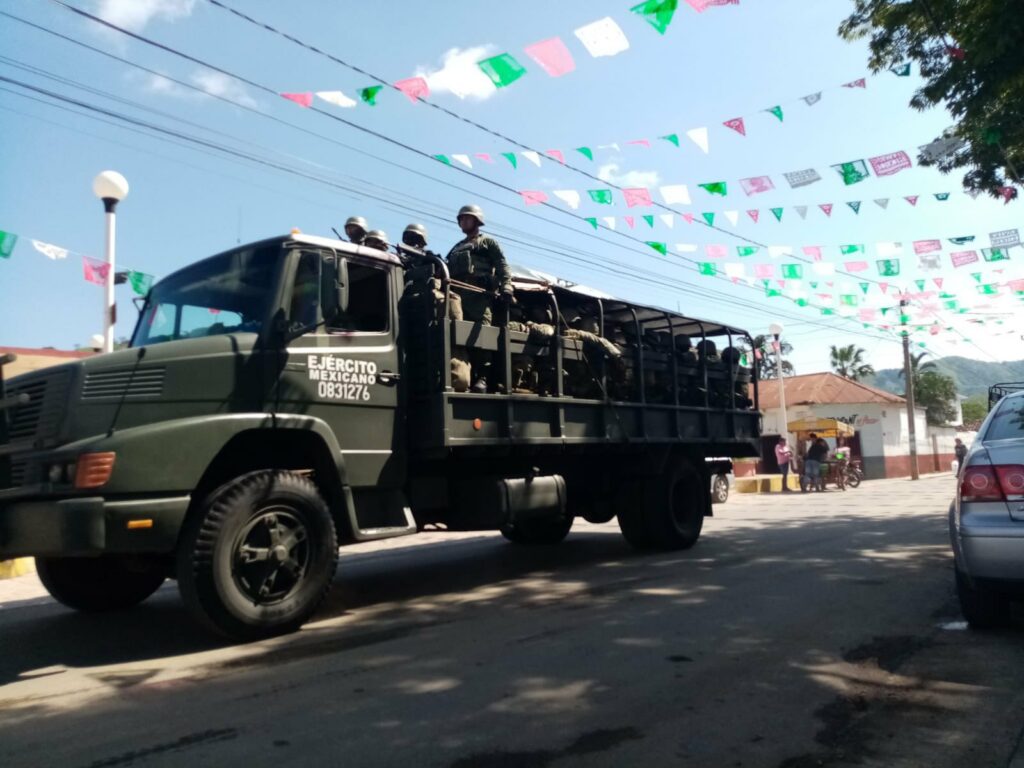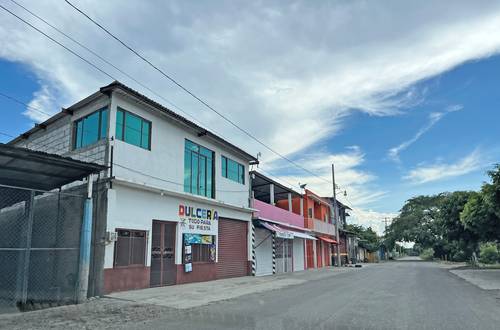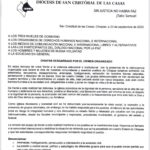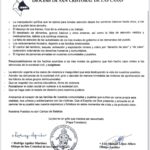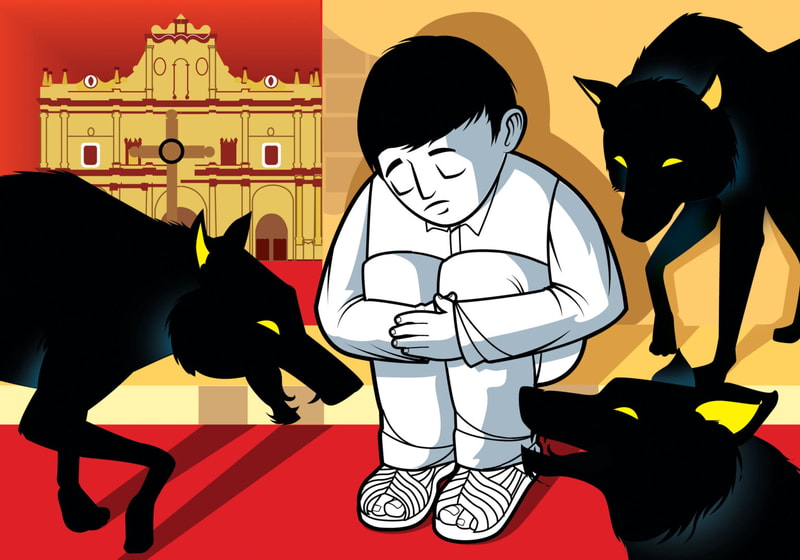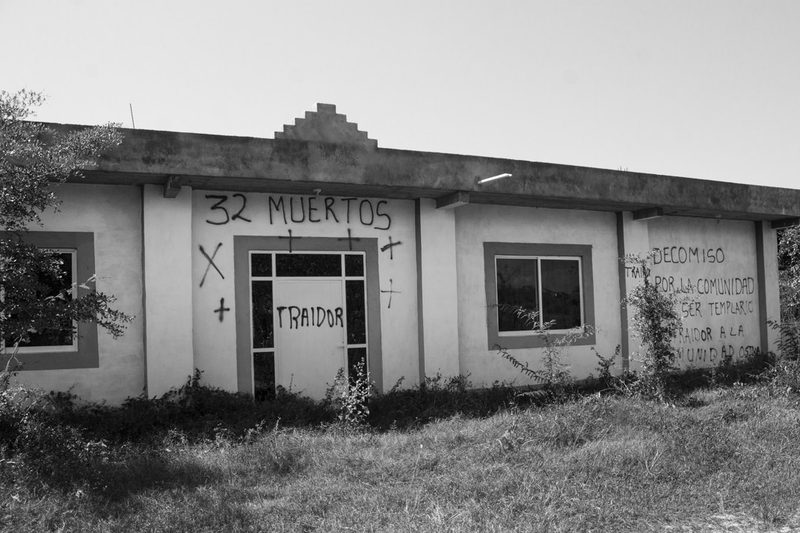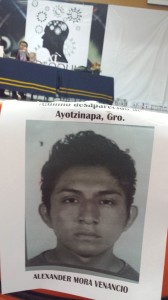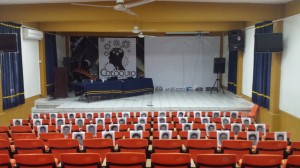“Llegaron directo a matarlos”: testigos de la masacre de Chicomuselo
Fuente: Chiapas Paralelo
Por Angeles Mariscal
“Ignacio, candidato a Diaconado de la Diócesis de San Cristóbal de Las Casas, Chiapas, y Teresita de Jesús, una joven catequista de niños y niñas; además de 9 personas de su familia fueron masacrados en la comunidad Nueva Morelia, en Chicomuselo por uno de los cárteles de la droga.”
La masacre contra 11 personas de la familia de Ignacio, catequista de la Diócesis de San Cristóbal de Las Casas de Chiapas y candidato a Diaconado -el cargo más alto que se le da a un seglar-, fue una acción directa. Fue un ataque dirigido. ¿Por qué? “Por siempre resistir, por no ser parte de las filas de ninguno de los dos grupos”.
Los cárteles Jalisco Nueva Generación (CJNG) y Sinaloa (CDS) mantienen una disputa por el control de varias regiones de Chiapas, entre ellas la sierra, donde se ubica la comunidad Nueva Morelia, del municipio Chicomuselo. Ahí a la población la obligan a tomar partido, a participar en bloqueos, a darles alimento y parte de la ganancia de sus cosechas. A quien se niega, lo consideran su enemigo.
Así lo cuenta una persona cercana a la familia, quien narra a este medio de comunicación cómo sucedieron los hechos.
Explica que no tienen certeza de cuál de los dos cárteles fue el que los asesinó, porque desde el día 8 de mayo ambos sostenían enfrentamientos en las zonas cercanas a Nueva Morelia. En ese lugar, desde enero pasado, unas 700 personas decidieron desplazarse, abandonar la comunidad. Ese mes se dio el primer enfrentamiento.
El 12 de mayo a la población de Nueva Morelia ya le habían cortado los servicios de agua, luz, internet. Ese domingo, un grupo a bordo de varias camionetas entró al pueblo y se dirigió directo a la casa del papa de Ignacio; eran alrededor de las 17:30 horas.
En esa casa se habían refugiado 11 personas: “el papá de Nacho (Ignacio), Nacho y su esposa, su hermana que está en silla de ruedas, Teresita de Jesús, cuñada de Nacho, Yojari, una joven sobrina de Nacho”. A todas las mataron.
A un grupo lo colocaron afuera de la casa y ahí les dispararon. Otros alcanzaron a correr al interior de la vivienda, pero también les dispararon.
Luego le prendieron fuego a la casa, por lo que algunos de los cuerpos tienen quemaduras. El grupo de hombres armados permanecieron muchas más horas ahí. Todavía grabaron las imágenes de los cuerpos tirados y la casa incendiándose. Las imágenes las compartieron en sus redes sociales.
El lunes por la mañana aún se encontraban en la zona, impidiendo que personal de la Fiscalía de Justicia levantara los cuerpos.
Hasta el martes, personas allegadas a la familia lograron acercarse. En un papel blanco escribieron el nombre de las personas asesinadas: Alfonzo, 73 años; Tere (Teresita de Jesús), 28 años; Dolores nació el 28 de marzo de 1968; Rosalinda, 56 años; Yojari (la más joven) nació el 18 de septiembre de 2006; Ignacio nació el 22 de julio de 1972, Isidra el 15 de mayo de 1970; Urbano el 6 de enero de 1982; y Brandi, otra joven de la que no se tiene certeza de cuántos años tenía.
Teresita de Jesús no solo era la cuñada de Ignacio, también era catequista de niños y niñas, la persona encargada de la formación religiosa de quienes iban integrándose a la Parroquia de Chicomuselo.
Ella misma era un joven de ojos negros y brillantes. En la fotografía con la que la población de Nueva Morelia la quiso recordar -para borrar quizá la imagen de su cuerpo ensangrentado, tirado boca abajo sobre la tierra-, se le observa con una sonrisa suave y una cabellera negra y ondulada.
- Por qué los mataron- le pregunto a persona cercana a la familia
- El grupo armado llegó directo a la casa del papá de Nacho y ahí los ejecutaron. (Los mataron) por siempre resistir, por no ser parte de las filas de ninguno de los dos grupos (el CDS y el CJNG). Pidieron ser libres (…) se oponían a la extracción minera.
La familia de Ignacio y cientos de personas más de la comunidad Nueva Morelia también formó parte de los grupos ambientalistas que durante años se opusieron a la extracción de la mina La Revancha, concesionada a la Compañía Minera Caracol SA de CV. Sin embargo, en el marco de la disputa entre cárteles, uno de los grupos inició la extracción de manera ilegal, porque la población nunca autorizó el uso de sus tierras.
Feligreses de la Parroquia de la Diócesis de San Cristóbal también denunciaron esta situación a través de diversos comunicados públicos. Desde 2022 sostuvieron reuniones con la Subsecretaria de Derechos Humanos del gobierno federal para pedir su intervención y detener el avance de los cárteles y la extracción minera ilegal.
- ¿Cómo están ahora, con esta masacre? – les pregunto con torpeza.
- Queremos ser visibles, queremos que nos escuchen (…) duele mucho el corazón.
Este miércoles Ignacio, Teresita de Jesús y los otros 9 miembros de su familia fueron sepultados, juntos; en ataúdes de colores que colocaron sobre la tierra rojiza.
Este mismo día entró un convoy del ejército mexicano a la zona, “entraron junto con gente del MAIZ-CJNG, tiraron bombas a la gente que está cuidando la comunidad Piedra Labrada. Tienen sitiadas varias comunidades”, explicaron los pobladores, desesperados porque las autoridades no los protegen, al contrario, para la población de la sierra hay un vínculo entre autoridades y grupos criminales.

